Finally, the Hyundai Santa Cruz pickup is here
After teasing us first with an extended-cab concept and then crew-cab test mules, years after its original 2015 Detroit show concept debut, the Santa Cruz pickup has arrived at long last. Hyundai is calling its new Santa Cruz a “Sport Adventure Vehicle”, touting the unique blend of crossover and pickup as a more nimble alternative to the typical midsize truck. We had the opportunity to see the Santa Cruz in person and while we didn’t get to drive it, we did get to test out some of its interesting packaging.

The Santa Cruz is built on the same platform as the newly redesigned Tucson, but despite that the two vehicles do not share any exterior body panels. While the Tucson is faceted, the body lines on the Santa Cruz are more subtle but cover a slightly wider footprint, giving the truck an athletic stance. Both Tucson and Santa Cruz do share a similar new headlight treatment, with segmented lighting signature that disappears into the grille when turned off.
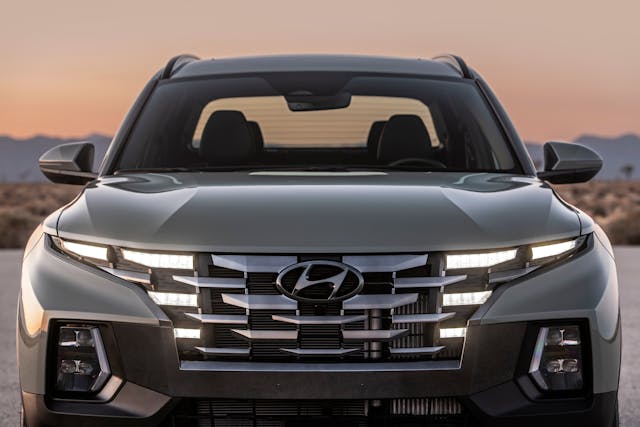
According to Hyundai, the Santa Cruz is built for city dwellers that like to escape to the outdoors. Hyundai touted the Santa Cruz’s ability to fit into smaller parking spaces than its mid-size pickup competitors (think Ranger and Colorado) while still offering the flexible storage of a bed for items that are too bulky or too dirty to go inside. The Santa Cruz rides on a 118.3-inch wheelbase and is 195.7 inches long overall, dimensions that are each about a foot shorter than the also-unibody Honda Ridgeline and relatively compact Toyota Tacoma. The bed is also shorter than those chief competitors, coming in at four feet long at the top and 52 inches long at the bottom (the tonneau takes up some room at the top forward edge of the bed). That makes the bed comparable to the Ford Explorer Sport Trac of 2001–2010. A rolling tonneau makes the bed secure, but with the cover retracted, tall items can be stowed and secured for transport. As shown below, a mountain bike can straddle the tailgate and be ready to head for the trail much easier than in an average crossover.
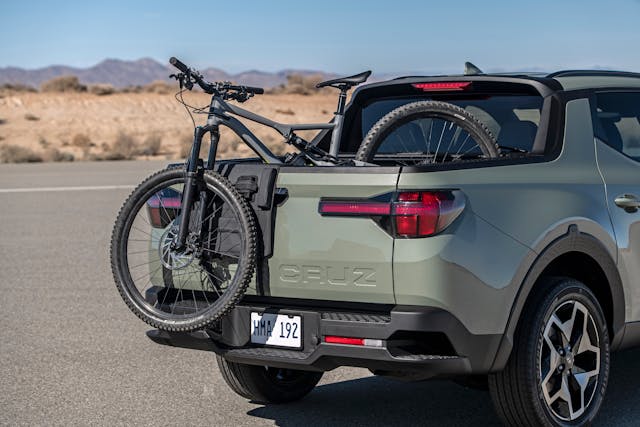
Below the bed floor is another space for cargo. Hyundai says that this lockable cubby will include a drain, so it can be used as a cooler for tailgating.
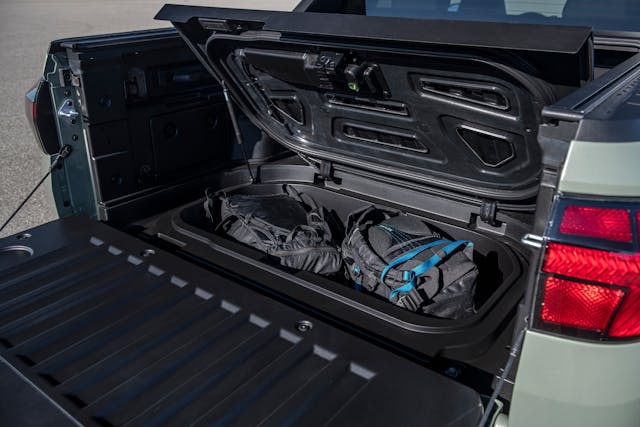
Inside, the Santa Cruz shares a lot with its Tucson platform-mate but opts for a more traditional center-console-mounted shift lever rather than the Tucson’s push-button shifter. Like the Tucson, the Santa Cruz boasts a roomy back seat. The 118.3-inch wheelbase allows for rear-seat passengers to have decent legroom, even when seated behind rather tall drivers. With the driver seat adjusted to accommodate a six-foot-tall driver, a similarly-sized passenger behind them wouldn’t feel like they were stuffed into economy airline seating. There won’t be any room for reclining, but the rear seating position ensures that the D-pillar is far enough back to keep out of the peripheral view of back seat passengers.
Another area in which the Santa Cruz departs from the Tucson is the powertrain. While the entry-level Santa Cruz will share the naturally aspirated, direct-injected, 2.5-liter inline four that produces around 190 horsepower, it will also be available with a more powerful turbocharged powerplant that you can’t get in the Tucson. The 2.5-liter turbocharged engine is good for around 275 hp (final numbers aren’t out yet) and brings the Santa Cruz’s tow rating up to an impressive 5000 pounds, up from 3500 pounds in the naturally aspirated model—both significantly more than the 2000-pound rating in the Tucson. As for transmissions, both engines will use eight-speed automatics, but the naturally aspirated engine is paired with a torque-converter automatic, while the turbocharged four is paired with a dual-clutch unit.

As a part of its plan to democratize safety features across its models, Hyundai will equip each Santa Cruz as standard with forward collision avoidance, lane-keeping assist, and Driver Attention Warning that will alert the driver if the vehicle senses that they’re not being attentive. Optional safety and convenience features include rear cross-traffic collision avoidance, blind-spot collision avoidance, and blind-spot view monitoring that displays a video feed of the vehicle’s blind spot in the instrument panel when the blinker is used. Also optional is Safe Exit Assist that warns passengers if a vehicle is approaching if they’re trying to open their door.
Hyundai hasn’t released any pricing info just yet, but expect Santa Cruz’s MSRP to significantly undercut the Ridgeline, which starts at more than $36,000. With Tucson starting at around $25,000, Hyundai should have a lot of room to make Santa Cruz very competitive.


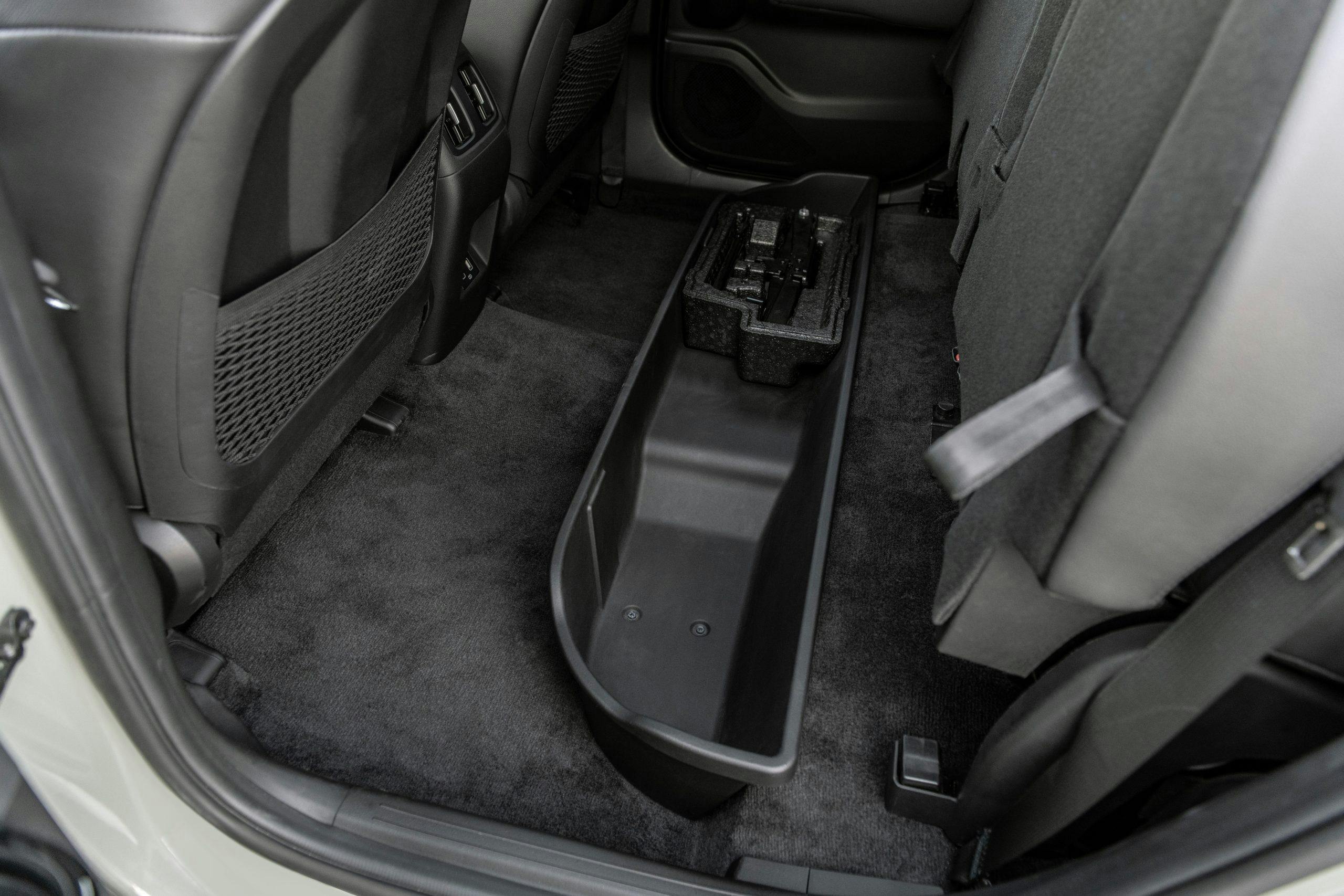
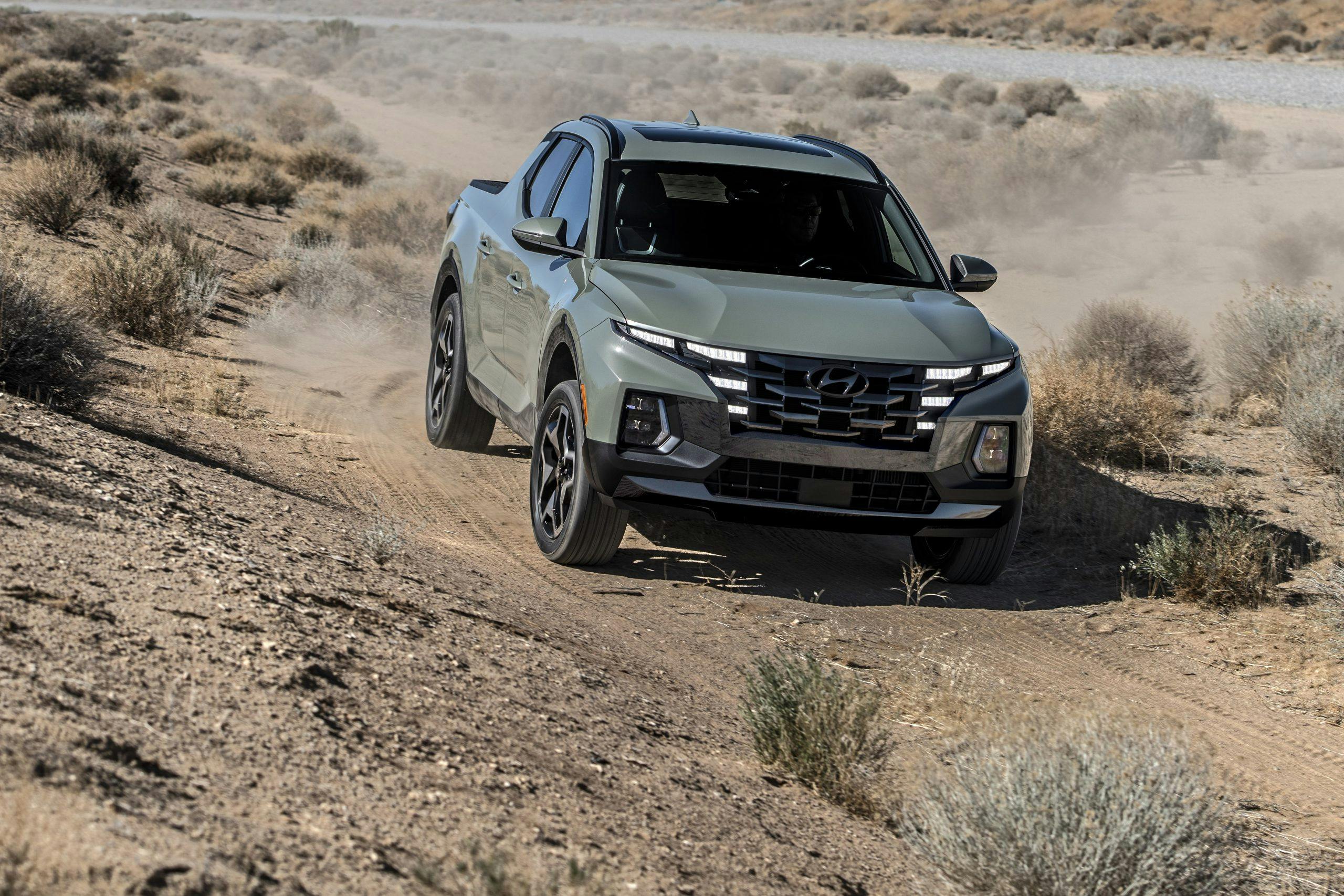

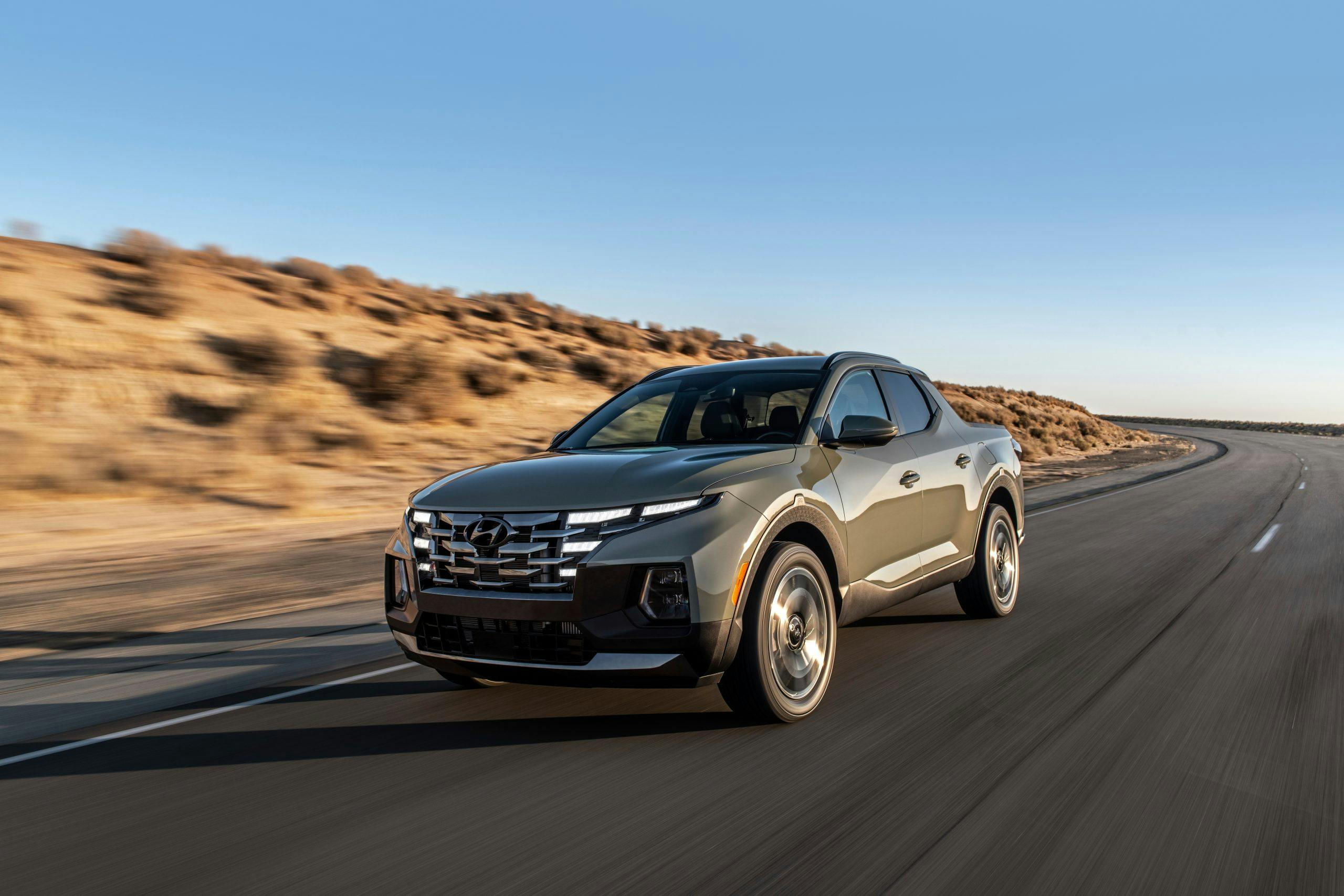
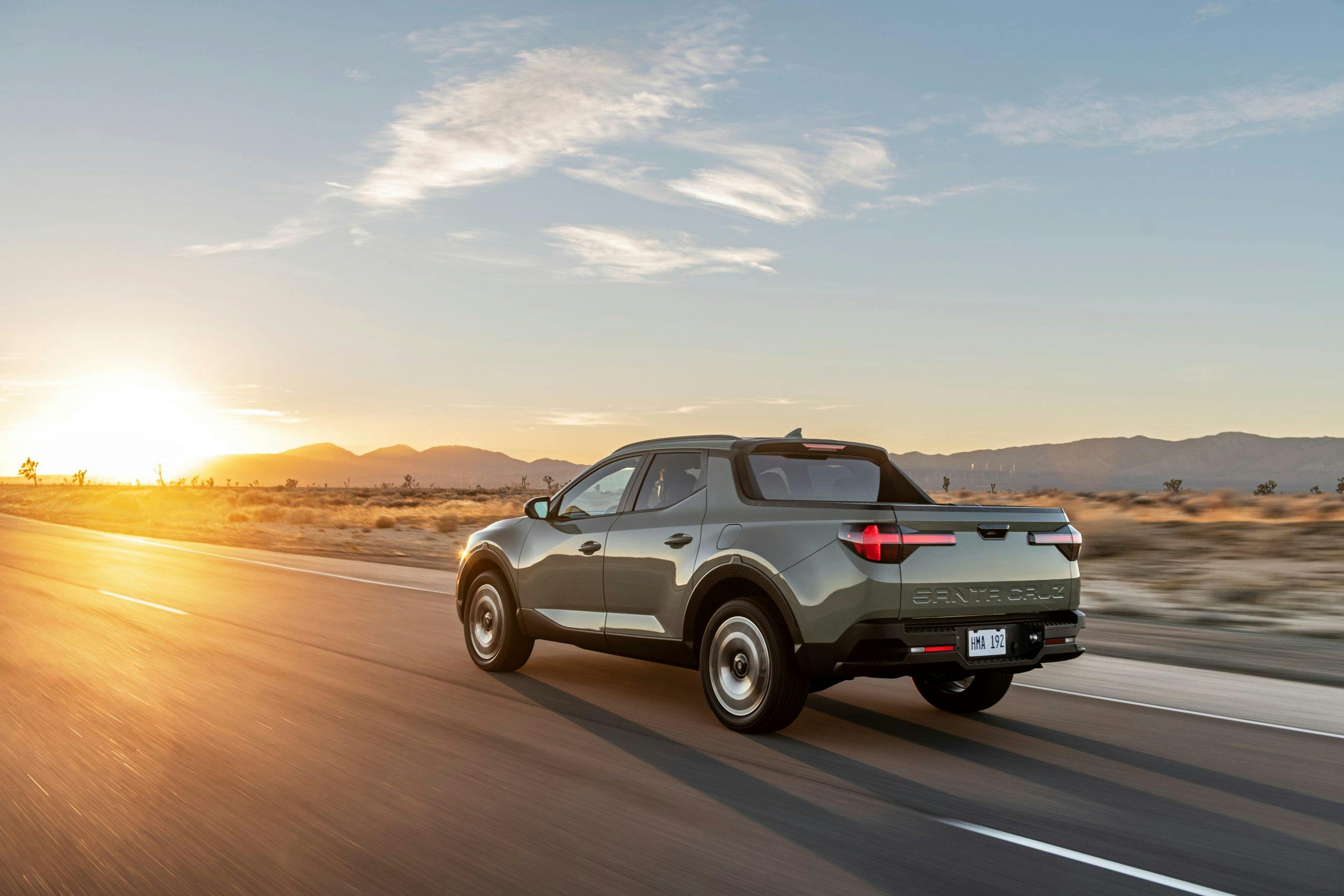
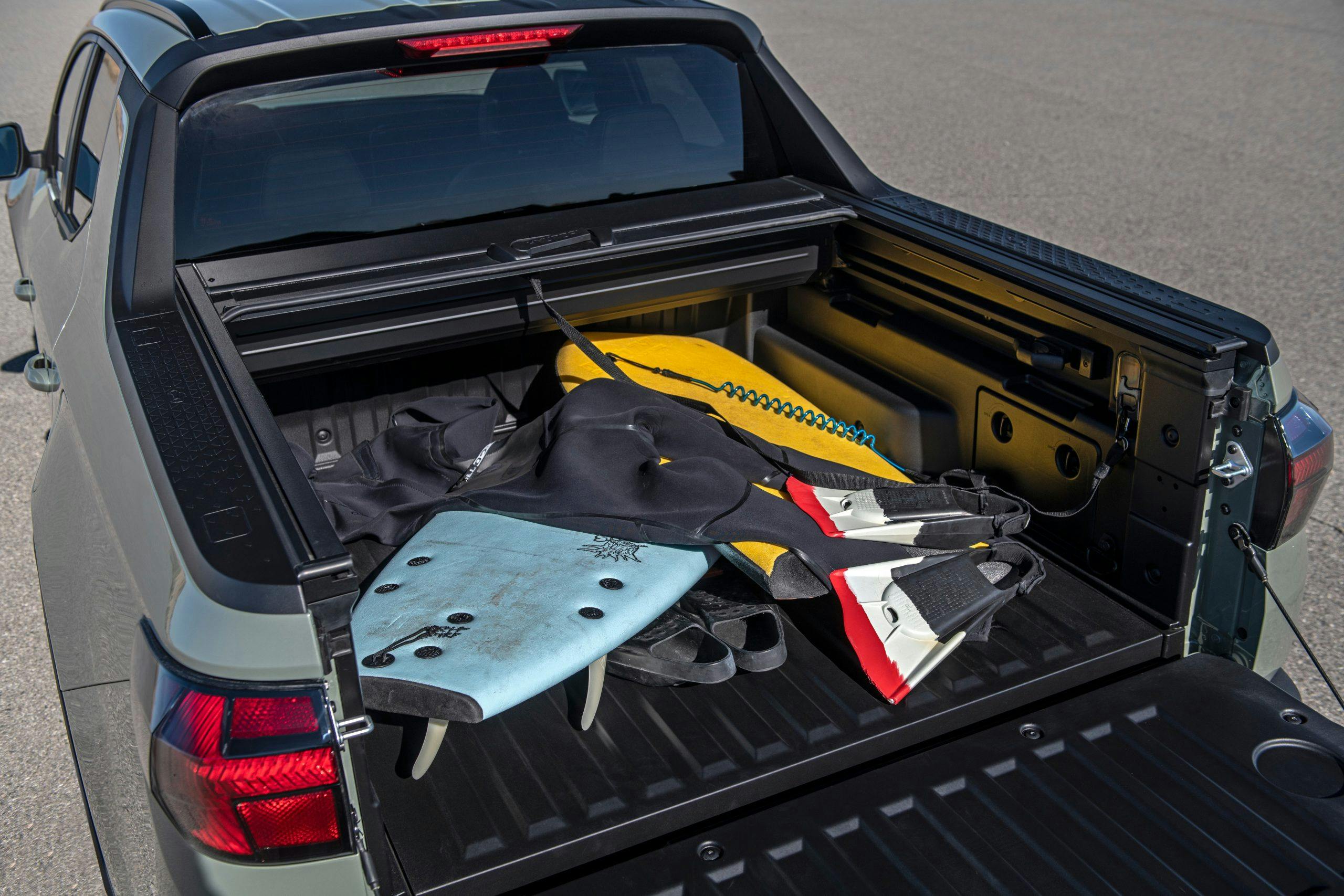
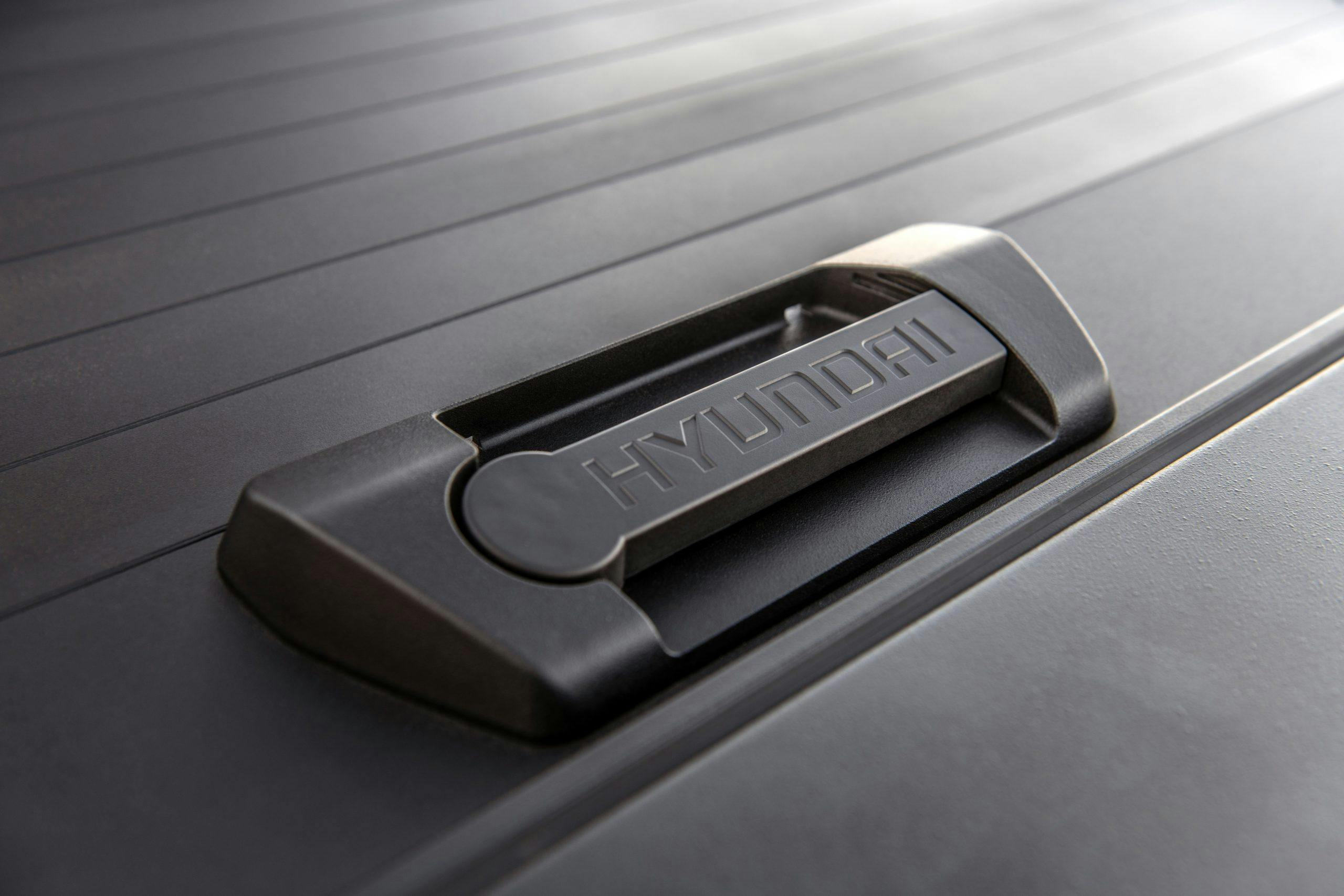

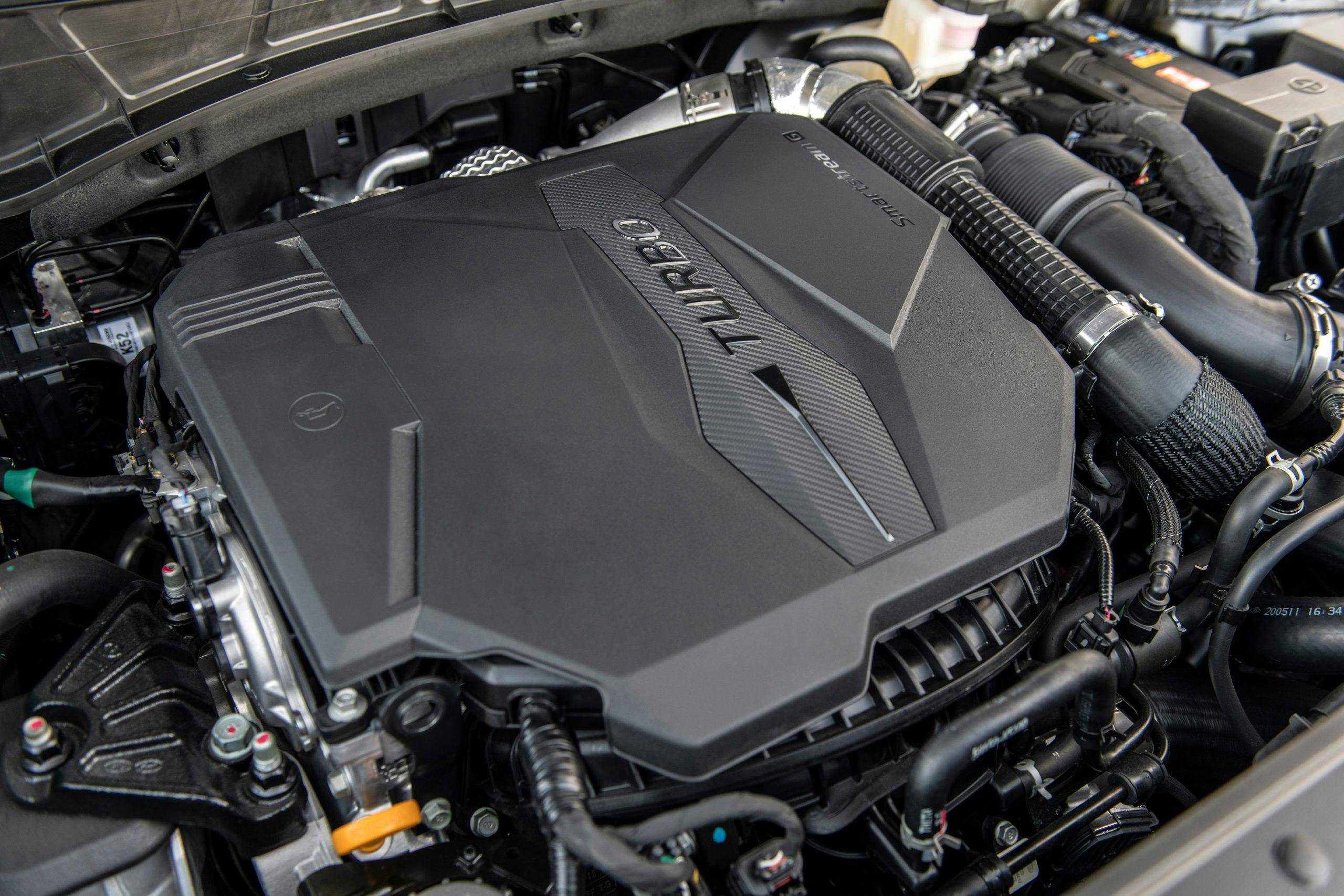


Beautiful vehicle looking too purchase one.